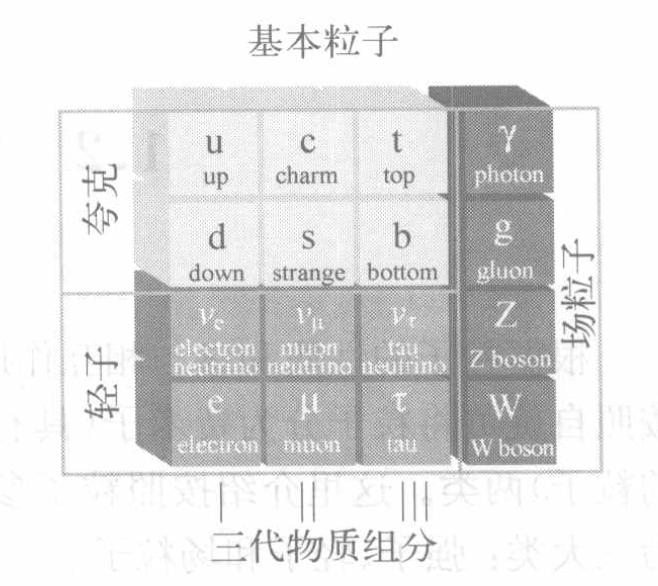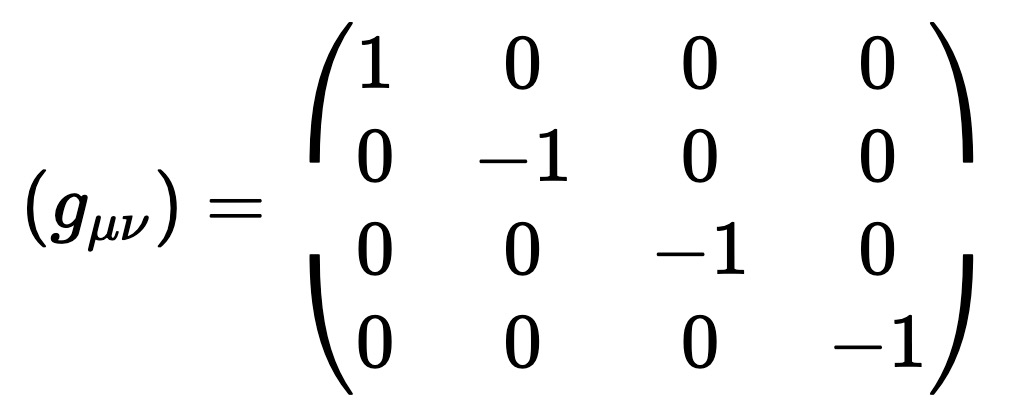The particle physicist's view of Nature and Lorentz transformation
The particle physicist’s view of Nature
A short category of the particle on the Standard Model picture:
1 Elementary Particles:
1.1 Fermions
a. Quarks: up, down, charm, strange, top, bottom quarks; spin=1/2
b. Leptons:
1.2 Bosons
a. Photon (
b.
c. Gluon; spin=1
1.3 Higgs Boson
a. Higgs Boson; spin=0

2 Composite Particles
2.1 Hadrons
a. Baryons: Proton (
and other strange baryons
b. Mesons: Pions (
Kaons (
and other mesons
Supplementary formula
Electron-positron annihilation cross section:
where
In units, set
Lorentz transformations
Rotations, boosts and proper lorentz transformation
Rotation:
Translation:
or
where
Introduce general Lorentz transformation
where the matrices
Define the interval
and it is invariant under Lorentz transformation. Introduce metric tensor:

Then
Scalars, contravariant and covariant four-vectors
Scalar
Quantities which are invariant under Lorentz transformation are called scalars.
Contravariant Four-Vectors
Define a contravariant four-vector to be a set
an example is the energy-momentum vector of a particle
Define a contravariant mertic tensor
Covariant Four-Vector
Define the corresponding covariant four-vector, carrying a subscript rather than a super script, by
If
We can write the invariant
Scalar Product
More generally, in scalar product, if
is invariant under a Lorentz transformation.
Transformation Law for Covariant Vectors
Note that, different from
Also, using the invariance of the scalar product, we have
and
So, it follows that
Fields
Scalar Fields and Vector Fields
Define a scalar field
Then construct a vector field from a scalar field
Contravariant Vector and Covariant Vector
Define a covariant vector
Define the contravariant vector
following that
and
are invariant under Lorentz transformations.
Tensors
Tensors like
The Levi-Civita tensor
The Levi-Civita tensor is defined by
And,
The corresponding Levi-Civita symbol in three dimensions is useful in the construction of volumes:
Similarly, the Levi-Civita tensor in four dimensions enables one o construct four-dimensional volumes by
In particular, it can define the “volume” element of space-time:
which is a Lorentz invariant scalar.
Time reversal and space inversion
The operation of time reversal:
The operation of space inversion:
Note that
- Title: The particle physicist's view of Nature and Lorentz transformation
- Author: Albert Cheung
- Created at : 2024-07-20 19:28:03
- Updated at : 2024-08-14 16:14:29
- Link: https://www.albertc9.github.io/2024/07/20/The-particel-physicist-s-view-of-Nature-and-Lorentz-transformation/
- License: This work is licensed under CC BY-NC-SA 4.0.

